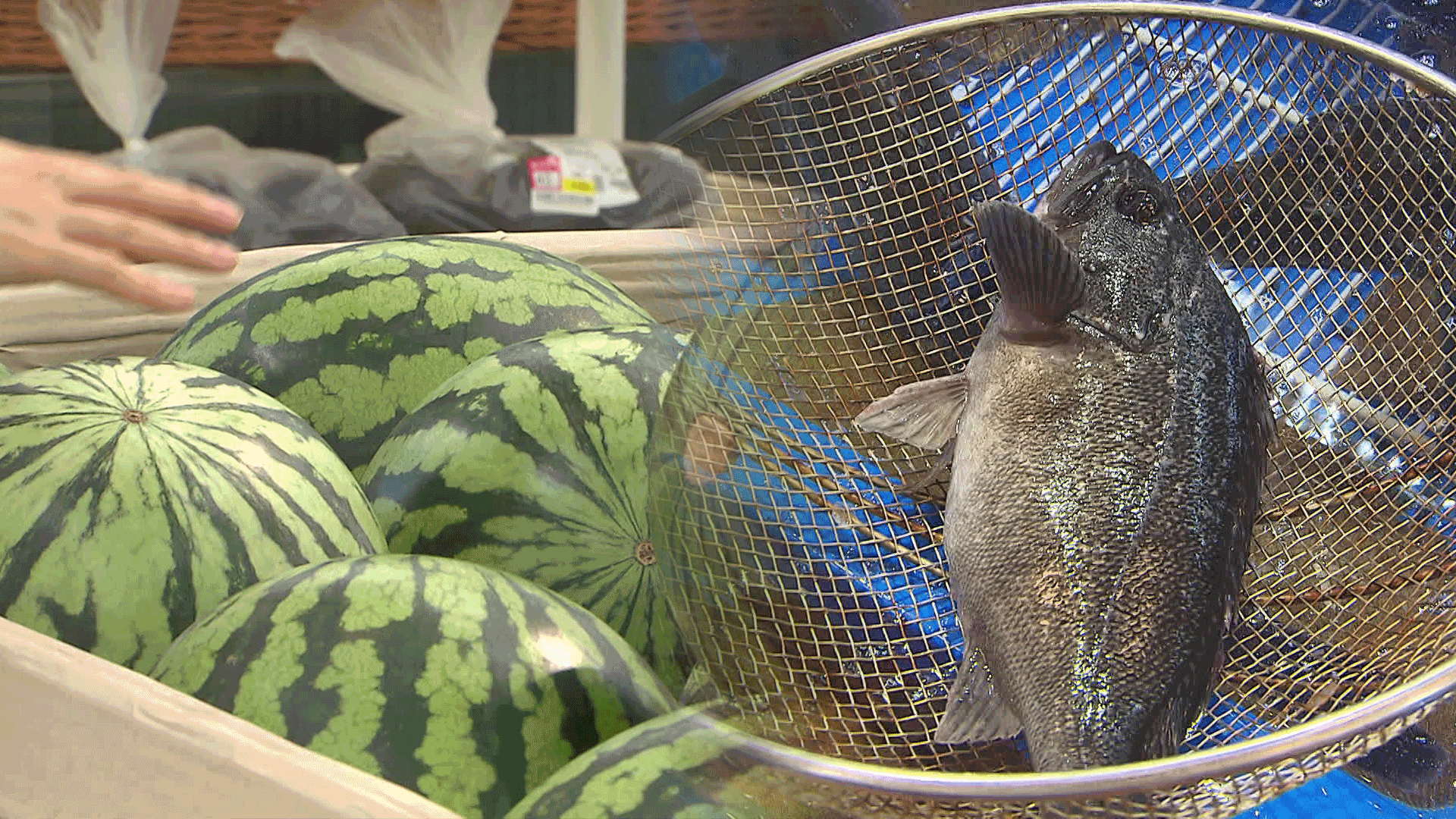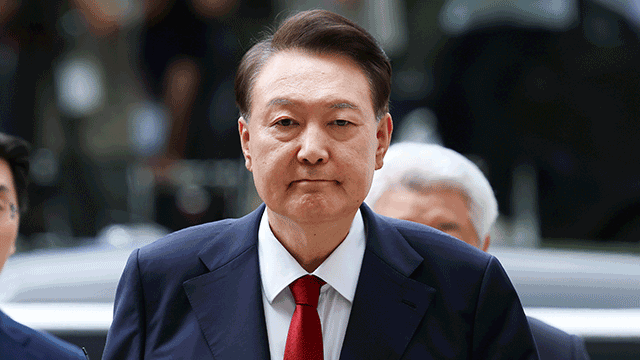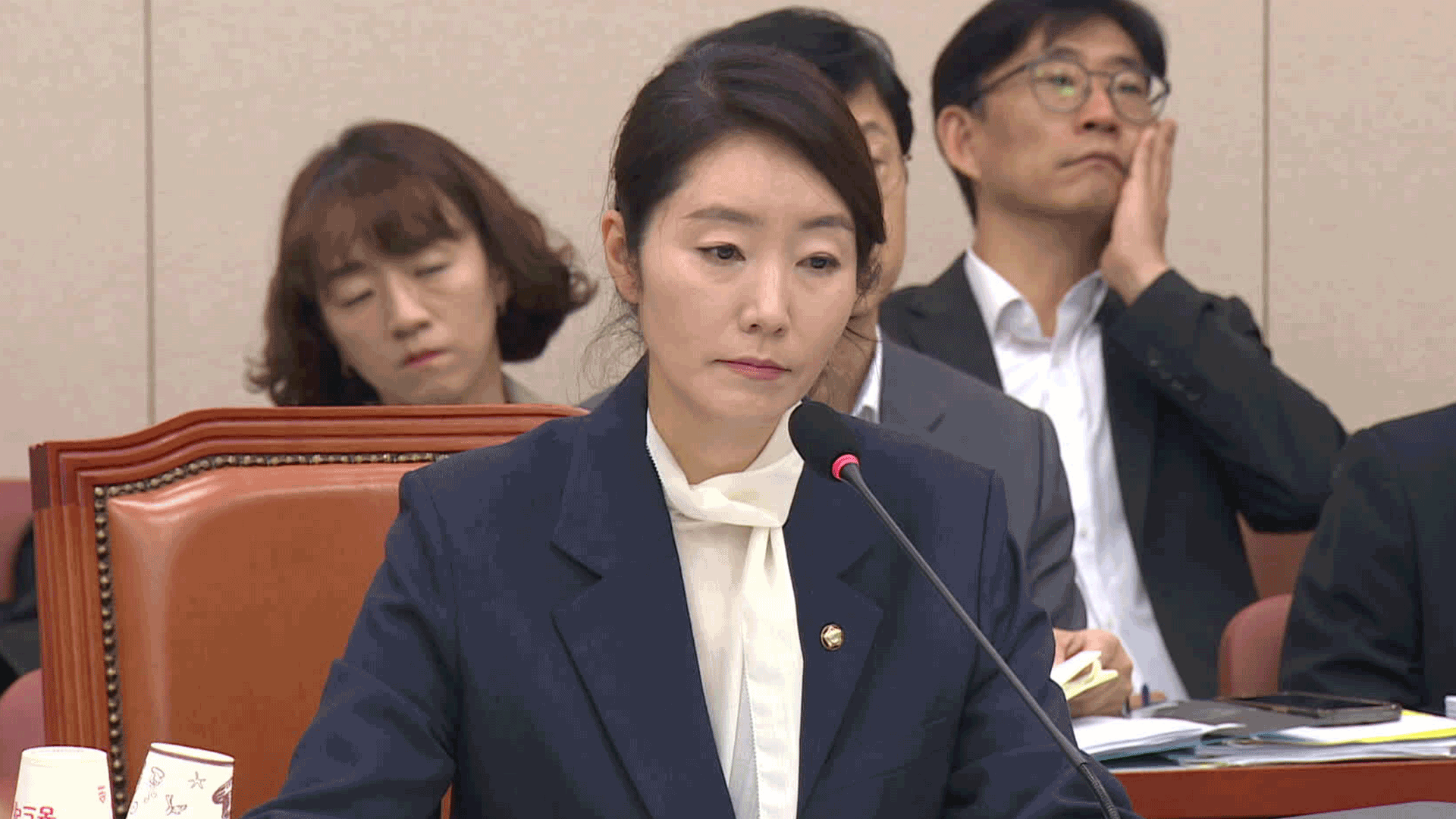[Anchor]
The early heatwave this year is causing food prices to fluctuate again.
Prices for vegetables, fruits, and even seafood are rising, increasing concerns about heatwave-induced inflation.
Reporter Kim Chae-rin has the story.
[Report]
Summer seasonal fruit, watermelon, occupies the center of the mart.
Shoppers stop to take a look and tap to check if it's ripe, but they hesitate to pick it up.
This is due to the price, which exceeds 20,000 won.
[Park Yoon-ja/Yeongdeungpo-gu, Seoul: "It's too expensive, so I just look and put it back. It must be tough for farmers, but it's much more expensive than we thought."]
As of today (7.14), the average price of a watermelon is 29,800 won.
This is 18% higher than a week ago and a staggering 42% higher than the average for previous years.
The early heatwave has led to increased demand, causing prices to soar.
The prices of napa cabbage and radishes have also risen by about 20% in just a week.
[Industry Insider: "Due to the heatwave, it's difficult to work in the fields during the day, so the market prices are on the rise."]
Seafood prices are also in a state of emergency.
The popular sashimi fish, flounder, has increased by 14% compared to a year ago, while rockfish has risen nearly 42%.
This is a result of mass die-offs in fish farms caused by high temperatures last year, and this year, the high-temperature warning was issued more than two weeks earlier than last year.
[Kim Dae-jin/Merchant at Noryangjin Fish Market, Seoul: "Flounder and rockfish are almost the basic options for sashimi, but the prices have increased significantly compared to before, making it tough for both us and consumers."]
It is analyzed that for every 1 degree increase in temperature, the price increase rate of agricultural products rises by up to 0.5 percentage points, and this effect lasts for about six months.
The longer the heatwave lasts, the longer the pressure on prices will persist. In response, the government has decided to support discounts of up to 40% on agricultural and livestock products starting this week.
This is KBS News, Kim Chae-rin.
The early heatwave this year is causing food prices to fluctuate again.
Prices for vegetables, fruits, and even seafood are rising, increasing concerns about heatwave-induced inflation.
Reporter Kim Chae-rin has the story.
[Report]
Summer seasonal fruit, watermelon, occupies the center of the mart.
Shoppers stop to take a look and tap to check if it's ripe, but they hesitate to pick it up.
This is due to the price, which exceeds 20,000 won.
[Park Yoon-ja/Yeongdeungpo-gu, Seoul: "It's too expensive, so I just look and put it back. It must be tough for farmers, but it's much more expensive than we thought."]
As of today (7.14), the average price of a watermelon is 29,800 won.
This is 18% higher than a week ago and a staggering 42% higher than the average for previous years.
The early heatwave has led to increased demand, causing prices to soar.
The prices of napa cabbage and radishes have also risen by about 20% in just a week.
[Industry Insider: "Due to the heatwave, it's difficult to work in the fields during the day, so the market prices are on the rise."]
Seafood prices are also in a state of emergency.
The popular sashimi fish, flounder, has increased by 14% compared to a year ago, while rockfish has risen nearly 42%.
This is a result of mass die-offs in fish farms caused by high temperatures last year, and this year, the high-temperature warning was issued more than two weeks earlier than last year.
[Kim Dae-jin/Merchant at Noryangjin Fish Market, Seoul: "Flounder and rockfish are almost the basic options for sashimi, but the prices have increased significantly compared to before, making it tough for both us and consumers."]
It is analyzed that for every 1 degree increase in temperature, the price increase rate of agricultural products rises by up to 0.5 percentage points, and this effect lasts for about six months.
The longer the heatwave lasts, the longer the pressure on prices will persist. In response, the government has decided to support discounts of up to 40% on agricultural and livestock products starting this week.
This is KBS News, Kim Chae-rin.
■ 제보하기
▷ 카카오톡 : 'KBS제보' 검색, 채널 추가
▷ 전화 : 02-781-1234, 4444
▷ 이메일 : kbs1234@kbs.co.kr
▷ 유튜브, 네이버, 카카오에서도 KBS뉴스를 구독해주세요!
- Heatwave drives food prices up
-
- 입력 2025-07-15 01:04:23

[Anchor]
The early heatwave this year is causing food prices to fluctuate again.
Prices for vegetables, fruits, and even seafood are rising, increasing concerns about heatwave-induced inflation.
Reporter Kim Chae-rin has the story.
[Report]
Summer seasonal fruit, watermelon, occupies the center of the mart.
Shoppers stop to take a look and tap to check if it's ripe, but they hesitate to pick it up.
This is due to the price, which exceeds 20,000 won.
[Park Yoon-ja/Yeongdeungpo-gu, Seoul: "It's too expensive, so I just look and put it back. It must be tough for farmers, but it's much more expensive than we thought."]
As of today (7.14), the average price of a watermelon is 29,800 won.
This is 18% higher than a week ago and a staggering 42% higher than the average for previous years.
The early heatwave has led to increased demand, causing prices to soar.
The prices of napa cabbage and radishes have also risen by about 20% in just a week.
[Industry Insider: "Due to the heatwave, it's difficult to work in the fields during the day, so the market prices are on the rise."]
Seafood prices are also in a state of emergency.
The popular sashimi fish, flounder, has increased by 14% compared to a year ago, while rockfish has risen nearly 42%.
This is a result of mass die-offs in fish farms caused by high temperatures last year, and this year, the high-temperature warning was issued more than two weeks earlier than last year.
[Kim Dae-jin/Merchant at Noryangjin Fish Market, Seoul: "Flounder and rockfish are almost the basic options for sashimi, but the prices have increased significantly compared to before, making it tough for both us and consumers."]
It is analyzed that for every 1 degree increase in temperature, the price increase rate of agricultural products rises by up to 0.5 percentage points, and this effect lasts for about six months.
The longer the heatwave lasts, the longer the pressure on prices will persist. In response, the government has decided to support discounts of up to 40% on agricultural and livestock products starting this week.
This is KBS News, Kim Chae-rin.
The early heatwave this year is causing food prices to fluctuate again.
Prices for vegetables, fruits, and even seafood are rising, increasing concerns about heatwave-induced inflation.
Reporter Kim Chae-rin has the story.
[Report]
Summer seasonal fruit, watermelon, occupies the center of the mart.
Shoppers stop to take a look and tap to check if it's ripe, but they hesitate to pick it up.
This is due to the price, which exceeds 20,000 won.
[Park Yoon-ja/Yeongdeungpo-gu, Seoul: "It's too expensive, so I just look and put it back. It must be tough for farmers, but it's much more expensive than we thought."]
As of today (7.14), the average price of a watermelon is 29,800 won.
This is 18% higher than a week ago and a staggering 42% higher than the average for previous years.
The early heatwave has led to increased demand, causing prices to soar.
The prices of napa cabbage and radishes have also risen by about 20% in just a week.
[Industry Insider: "Due to the heatwave, it's difficult to work in the fields during the day, so the market prices are on the rise."]
Seafood prices are also in a state of emergency.
The popular sashimi fish, flounder, has increased by 14% compared to a year ago, while rockfish has risen nearly 42%.
This is a result of mass die-offs in fish farms caused by high temperatures last year, and this year, the high-temperature warning was issued more than two weeks earlier than last year.
[Kim Dae-jin/Merchant at Noryangjin Fish Market, Seoul: "Flounder and rockfish are almost the basic options for sashimi, but the prices have increased significantly compared to before, making it tough for both us and consumers."]
It is analyzed that for every 1 degree increase in temperature, the price increase rate of agricultural products rises by up to 0.5 percentage points, and this effect lasts for about six months.
The longer the heatwave lasts, the longer the pressure on prices will persist. In response, the government has decided to support discounts of up to 40% on agricultural and livestock products starting this week.
This is KBS News, Kim Chae-rin.
-
-

김채린 기자 dig@kbs.co.kr
김채린 기자의 기사 모음
-
이 기사가 좋으셨다면
-
좋아요
0
-
응원해요
0
-
후속 원해요
0











![[단독] “윤석열·김용현 등 공모해 군사상 이익 해쳐”…외환죄 대신 일반이적죄 적용](/data/layer/904/2025/07/20250714_3VTJV3.jpg)



이 기사에 대한 의견을 남겨주세요.